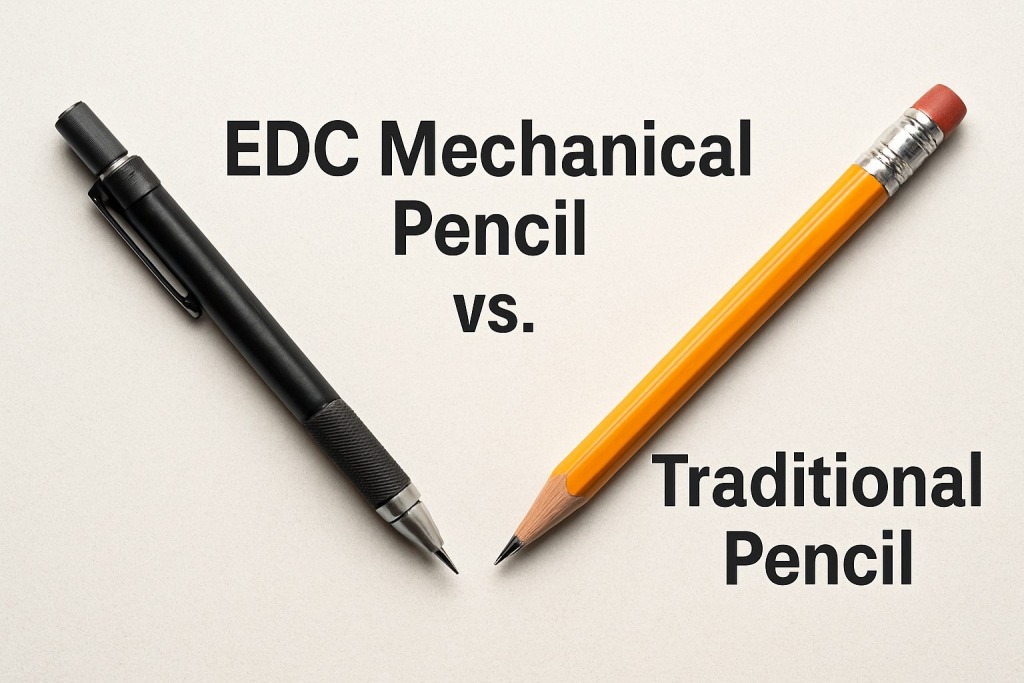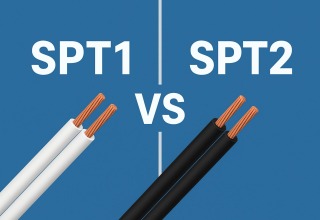
Everyday carry (EDC) items have become an essential part of modern life, providing practical solutions for both professionals and hobbyists alike. Among these items, the EDC mechanical pencil has gained popularity for its convenience and efficiency. But how do these pencils compare to traditional pencils? Understanding the differences between the two can help you make informed decisions whether you’re sketching, jotting down notes, or working on intricate designs.
In this article, we’ll dive into the world of EDC mechanical pencils, exploring their features and how they stack up against traditional pencils. This comparison is not just academic; it holds significant value for anyone who regularly uses pencils, from artists and architects to students and office workers.
What is an EDC Mechanical Pencil?
An EDC mechanical pencil is designed with everyday use in mind, offering several key features that set it apart from its traditional counterpart:
- Refillable Leads: EDC mechanical pencils use replaceable leads, meaning you never have to worry about running out of writing material. This also allows for a consistent line width, perfect for precise writing and sketching.
- Consistent Performance: Unlike traditional pencils that require sharpening, these pencils provide uninterrupted writing. They maintain their point, ensuring consistency from the first line to the last.
- Practicality: EDC mechanical pencils are durable and versatile. They often come with additional features like erasers or grips, enhancing user comfort and efficiency over long sessions.
The rise of EDC items, including mechanical pencils, can be attributed to their practicality and the growing appreciation for tools that seamlessly integrate into daily life.
For anyone weighing the merits of an EDC pencil against traditional options, understanding these basic features can provide clarity and aid in making a choice that best fits their lifestyle and needs.
Advantages of Mechanical Pencils
Mechanical pencils offer a variety of advantages that make them appealing for different tasks:
- Refillable and Durable: The refillable nature of mechanical pencils makes them eco-friendly and cost-effective in the long run. Instead of disposing of the entire pencil, users simply replace the lead.
- No Sharpening Needed: Unlike traditional pencils, mechanical pencils eliminate the need for sharpening. This saves time and ensures a smooth workflow.
- Preferred for Technical Drawing: The precision offered by mechanical pencils makes them ideal for technical fields such as engineering and architecture. Their reliability and accuracy are unmatched, making them indispensable in these professions.
Overview of Traditional Pencils
Traditional pencils have been a staple in both art and daily writing tasks for many years. They come in various forms, each suitable for different uses:
- Types of Traditional Pencils:
- Graphite Pencils: These are the most common variety, used for writing and sketching. They come in a range of hardness levels (e.g., 2B, HB), offering users options for various artistic and writing needs.
- Colored Pencils: Ideal for art projects, these pencils are filled with wax-based or oil-based pigments.
- Advantages:
- Affordability: Traditional pencils are generally cheaper than mechanical pencils, making them accessible to a wide audience.
When exploring traditional art techniques, wooden pencils often stand out due to their versatility and tactile feedback. To understand more about preferences for various art supplies, check out resources related to traditional art techniques.
In sum, while traditional pencils and mechanical pencils serve similar fundamental purposes, their unique advantages cater to specific needs in different contexts. They continue to play an essential role in both professional and creative endeavors.
Variations and Innovations in Mechanical Pencils
Mechanical pencils have come a long way, offering a variety of features and designs tailored to different needs. Here’s what you can find in the market today:
- Lead Sizes: Mechanical pencils come in multiple lead sizes, typically ranging from 0.3mm to 0.9mm. Thinner leads, like 0.3mm, are ideal for detailed work, while thicker leads provide durability for heavy writing.
- Grip Designs: Comfort is key when choosing a pencil, and mechanical pencils offer various grip styles. From cushioned grips to textured surfaces, different designs help reduce hand fatigue during prolonged use.
- Auto-advance and Retractable Tips: Advancements such as auto-advance mechanisms provide a smooth writing experience without frequent clicking. Retractable tips enhance portability and protect the lead when not in use.
- Unique Designs: Cool mechanical pencils often feature innovative designs like rotating lead mechanisms and stylish body materials, appealing to those who appreciate a blend of function and style.
- Specialty Features: Some mechanical pencils come with features like built-in erasers, clip-on holders, and even highlighter leads.
EDC Pencils in Professional Fields
Everyday carry mechanical pencils are invaluable in professional settings, especially within engineering, architecture, and technical sectors. Here’s why these pencils are loved by professionals:
- Precision: EDC pencils deliver precise lines, which is essential for technical drawings and detailed plans.
- Reliability: Known for their consistent performance, mechanical pencils ensure that professionals can depend on them in high-pressure environments.
- Durability: Constructed using high-quality materials, these pencils withstand frequent use and transport.
Professionals, such as engineers, architects, and designers, often rely on these tools for daily tasks.
In summary, EDC mechanical pencils offer versatility and innovative features that cater to both creative and technical professionals. Their diverse designs and dependable performance make them an ideal tool for anyone seeking a durable, everyday carry pencil.
Cost and Durability Comparison
When it comes to cost and durability, both EDC mechanical pencils and traditional pencils have distinct attributes that affect long-term use and sustainability:
- Mechanical Pencils:
- Initial Cost: Typically higher due to their reusable nature and advanced features.
- Durability: Designed for long-term use; replacing the lead and eraser is more cost-effective over time.
- Environmental Impact: Refilling reduces waste, making them an eco-friendlier choice.
- Maintenance: Easy to maintain, requiring only fresh leads and occasional erasers.
- Traditional Pencils:
- Initial Cost: Very affordable and widely available.
- Durability: Wear down quickly and require constant replacement, leading to more waste.
- Environmental Impact: Less eco-friendly, as they are disposable and contribute to deforestation when not sustainably sourced.
- Ease of Use: Ready to use but require frequent sharpening.
Overall, EDC mechanical pencils provide a longer-lasting and potentially more eco-friendly option compared to traditional pencils, but with a higher upfront cost. If you are in the market for a mechanical pencil, check out Everyman.
Best Scenarios for Each Pencil Type
Different scenarios and professions may benefit more from one type of pencil over the other:
- EDC Mechanical Pencils are ideal for:
- Professionals: Engineers, architects, and designers who need precision and reliability in their tools.
- Technical Drawing: Offers consistent line width, making them perfect for detailed work.
- Frequent Travelers: Compact and less messy, they are excellent for on-the-go use.
- Traditional Pencils are best suited for:
- Artists: Those valuing the varied lead hardness for texture and shading.
- Students: Cost-effective and easy to replace as needed without worry.
- Casual Use: Ideal for general writing tasks around the home or office.
- Environmentalists: When sourced sustainably, they can be a green choice.
Selecting the right pencil type hinges on your specific needs, whether it’s precision for professional tasks or cost-effectiveness for daily use.























